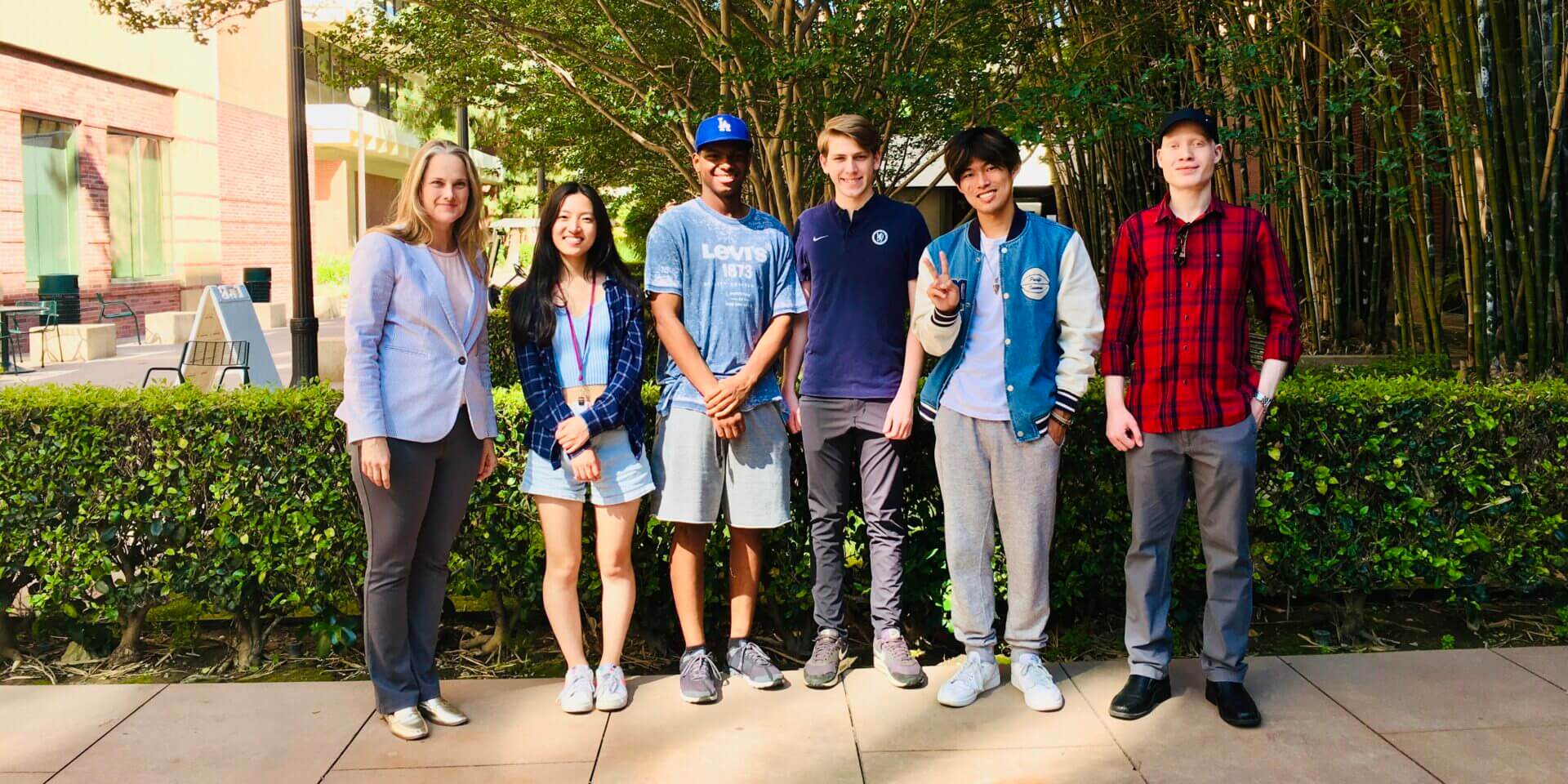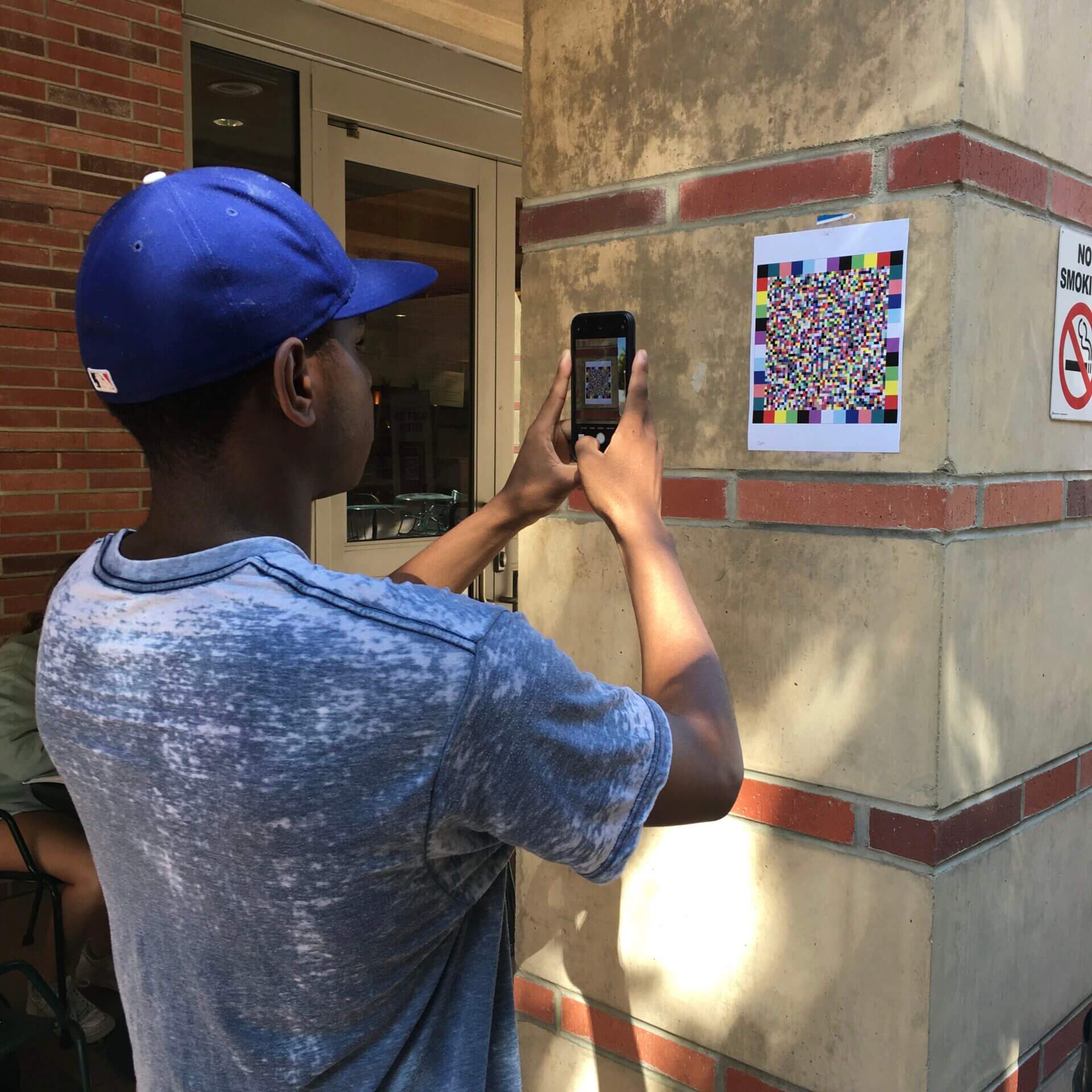
By Romil Audhkhasi
Very often, stories about mentorship open with an anecdote about how the author, as a young researcher himself, struggled to find mentors and, now that he is older, he wants to provide others with better opportunities. Well, I’m sorry to tell you that’s not how this story goes down. In fact, in my career as a researcher I always had supportive mentors. In some ways, I think that makes my growth as a mentor over the last year even more surprising.
When I was told about four young undergraduate students interested in conducting research in microphotonics as part of Viterbi’s CURVE Fellowship, it seemed only natural for me to get involved. As a PhD student in Michelle Povinelli’s Nanophotonics Laboratory, I figured it would be a great opportunity to get more hands-on experience in my field and maybe even a little support from young, motivated researchers. Instead, I ended up learning more about myself as a person, researcher, and mentor.
Research teaches you how to think creatively, deal with adversity, and persevere – qualities that help no matter what you decide to do.
The CURVE program is a chance for undergraduate students to explore research opportunities at USC Viterbi and gain skills to excel in engineering once they graduate. Students are paired with a lab where they join a specific project that PhD students are already working on. The undergrads are assigned a PhD student mentor who guides them along the way and provided resources for professional development in the form of seminars and workshops. At the end of the program, the undergrads present their research at a symposium.
Now, what is mircophotonics? Simply put, it’s the study of how light interacts with matter on the subwavelength scale. In our lab, I design structures with sizes of the order of one-millionth of a meter to leverage these light-matter interactions for a wide variety of applications ranging from chemical sensing and photodetection to energy harvesting, thermal management, and secure communication. Lately, there has also been a growing interest in using photonics for manipulating thermal radiation.
This was the world our young researchers were joining when they came to our lab. The idea of the project was to use light for encrypting information. In recent years, people have started working on metamaterials -- artificially engineered materials that can manipulate light. The goal of our project was to propose a communication system that would leverage the functionalities provided by metamaterials to spread image data across multiple wavelength channels. In our prior work before the undergrads joined us, we had developed an encryption scheme that would work with this system.
With the CURVE students, we tested the robustness of this scheme under real-world conditions by using it on a dummy encryption system. The system consisted of a phone camera and a display device. Images were encrypted using our algorithm and then either displayed on a computer screen or printed on a sheet of paper. These encrypted images were captured using a phone camera and then decrypted using our algorithm. The process of having an intermediate camera introduced noise into the system and served as a test for the robustness of our scheme. The robustness was quantified by using a similarity score between the decrypted image and the original image.
By the end of the program, we were able to implement a system in which the decrypted images were always more than 90% similar to the original image regardless of their resolution, external lighting conditions, or display media. The main challenge in this project was to reduce the dependence of the decryption process on external user inputs.
Now, that’s a lot of technical information to digest but the real lessons I learned were in three important categories: diversity, leadership, and mentoring.

Undergrad student Cameron Davis is clicking a picture of a random colored image that encodes a black and white image of a cat. The clicked picture can be decrypted to obtain the cat image by using a decryption key (PHOTO CREDIT: Romil Audhkhasi)
Diversity
The project benefited immensely from having people from engineering backgrounds different from my own. Although I’m an electrical and computer engineer, our undergrads came from the mechanical engineering, computer engineering, and computer science departments. Each one of us had different ways of looking at the same problem which resulted in a lot of great ideas that made the project better. Students also realized they could excel in areas outside their specialization. My mechanical engineering student discovered that he was quite good at coding for a fairly complex image processing task – something he never would have come across in his usual classes. As a researcher, it opened my eyes to how valuable collaboration between people with different backgrounds can be. This is something I plan on taking with me after I graduate.
Leadership
Participating in CURVE made me a better teacher and team leader. I was working with a team of students who were all at different stages of their undergraduate program and had different skill sets. Furthermore, they were not familiar with our research when they started out in the program. It was my responsibility to bring them up to speed with key concepts and ensure that they were comfortable with coding, conducting experiments, and analyzing data. This required a soft skill that one doesn’t always learn when they are in the lab: listening!
Being a good team leader is not just about delegating, it’s about understanding the needs of your team and supporting them as individuals. I wanted to be sure I was there for them as much as possible, so throughout the course of the program, I made sure to stay connected with the students via Slack. If any student needed help with a piece of code or was having difficulty understanding their task, I would set up a Zoom call to address their queries. I was also very responsive to emails and made sure that the students had access to the resources that they needed for the project.
Mentorship
After participating in the CURVE program, I’d say that every engineering undergrad should consider research. Research enriches your life in so many ways. It’s an opportunity to apply concepts learned in the classroom to real-world problems. It’s considered essential for students who might want to apply to a PhD program and looks great on your CV even when you are looking for jobs in the industry.
But I also have important advice for PhD students: seek out opportunities to broaden your research focus! In my case, a project that I initially perceived to be applicable to a core photonics system branched off into a mini project for the undergrads about testing the central idea on a dummy system. In this way, my CURVE project with less experienced undergrads ended up enriching my own research path and future trajectory.
I would also advise senior PhD students to start viewing their research in a more inter-disciplinary way. Not only does this open new opportunities to collaborate and expand your professional network but having people from different disciplines on the team generates multiple perspectives and new ideas which ultimately benefits the research project.
For all my advice about the importance of research in technical skills and collaboration, there is one simple reason that anyone should consider research, no matter their background or career path. Simply put, research teaches you how to think creatively, deal with adversity, and persevere – qualities that help no matter what you decide to do.
Romil is a 6th year PhD student in Michelle Povinelli's Nanophotonics Lab. His research focuses on designing microphotonic structures for complex thermal radiation control and secure infrared communication. In the coming year, he plans to defend his dissertation and proceed to pursue an academic career in photonics as a postdoctoral researcher.
Students with an interest in being a PhD mentor or undergraduate researcher can email viterbi.studentservices@usc.edu
Published on August 30th, 2022
Last updated on August 31st, 2022

